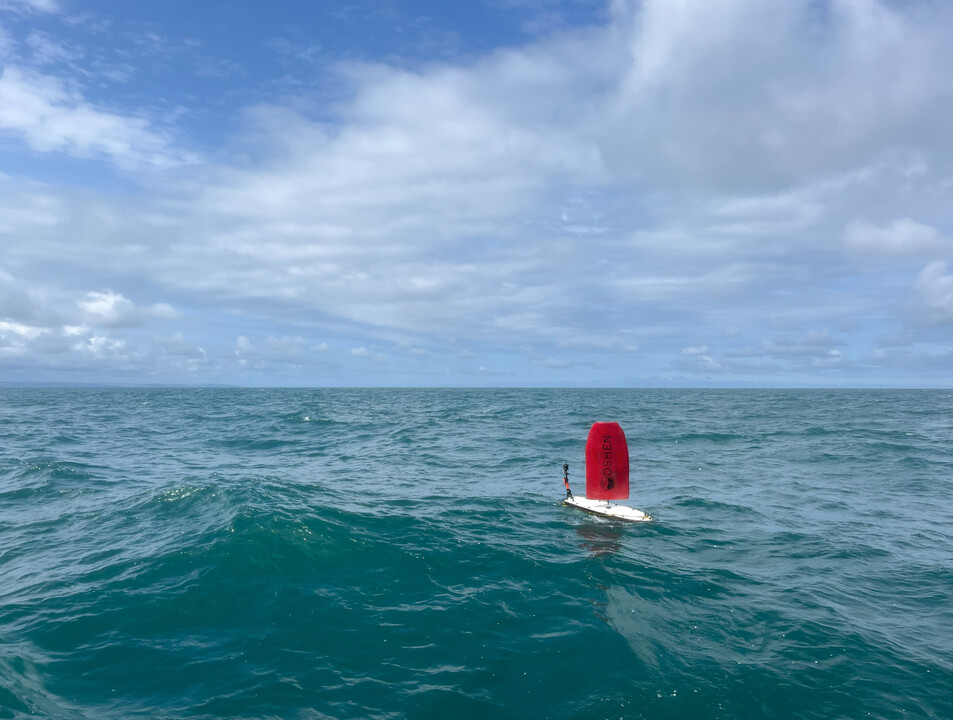News
From sea to space: Oshen

Introducing Oshen, one of the latest companies to join the ESA BIC UK programme at STFC’s Daresbury Laboratory in the northwest. Oshen is a dynamic UK start-up working on new cutting-edge technologies, dedicated to revolutionising oceanography, sustainably through AI and space technology.
Significant portions of our ocean remain unexplored, Oshen aims to explore the ocean, monitor environmental health, track marine life and much more.
Who is Oshen?
Imagine a vessel that can sail the sea completely on its own, tirelessly navigating the open ocean to capture real-time data. This data is then relayed hourly through satellite technology.
These autonomous robotic sailboats aim to transform the way we deliver live ocean data, providing information on areas such as the sea state, water quality, meteorological activity and sea and bird life.
Designed to work in networked fleets, Oshen has created a lightweight sail-powered ocean observation platform. These self-navigating micro-vessels are 1 metre long and use an array of onboard solar-powered visual and acoustic sensors.
Navigating challenges: the quest for ocean data
Gathering accurate ocean data is a significant challenge due to the nature of the environment and the vast distance involved. The ocean covers more than 70% of the Earth’s surface, so gathering real-time data is a costly, resource-intensive challenge. Current approaches to collecting ocean data involve deploying various technologies including sensors and buoys. These often become lost or damaged at sea, relaying limited or inaccurate information.
The solution: autonomous micro-vessel
Oshen’s new generation of ocean sensing systems are small enough to be deployed by anyone, anywhere. The information gathered by the onboard technology is relayed hourly through satellite technology, able to provide factual and actionable data. Moreover, if the device is knocked off course or swept away through storms or changing weather conditions, it can self-steer back to its target site.
Due to the weight of the vessel, the equipment can be deployed by hand whilst at sea or from a beach. Moreover, due to being powered through wind propulsion and solar power, the autonomous vessels have no limit on range, meaning missions can last several months.
This intelligence will help plan targeted responses for weather events, localise coastal weather, provide flood updates and help better route planning for shipping, minimising pollution, and emissions.
Visit Oshen’s website.



